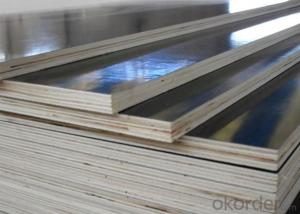Oriented Strand Board, or OSB, is a versatile and cost-effective alternative to plywood that has been gaining popularity in the construction and woodworking industries. Made from strands of wood that are arranged in cross-oriented layers and bonded with a waterproof adhesive, OSB offers a range of benefits that make it an attractive option for many projects. In this article, we’ll explore the features of OSB, its applications, and how it compares to plywood, with a focus on a more personal and engaging tone rather than a formal one.
The Origins of OSB
OSB was first developed in the 1960s in the United States as a way to utilize the waste wood generated by the lumber industry. The idea was to create a strong, stable material from what was once considered waste. Over the years, OSB has evolved and improved, becoming a preferred choice for many due to its unique properties.
Why Choose OSB Over Plywood?
So, why might you choose OSB over the more traditional plywood? There are several reasons. First, OSB is generally less expensive, making it a budget-friendly option for large-scale projects. Second, it is highly resistant to moisture, which makes it suitable for outdoor applications and in areas prone to dampness. Third, OSB’s raw, unfinished look can add a rustic charm to a project, a feature that many homeowners and designers appreciate.
Applications of OSB
OSB’s versatility shines through in the wide range of applications it can be used for. From structural sheathing in construction projects to creating furniture and even as a substrate for art projects, OSB can handle it all. Its strength and stability make it ideal for heavy loads, while its raw appearance can be a design feature in itself.
Aesthetic Appeal
One of the most striking aspects of OSB is its aesthetic appeal. The natural wood strands arranged in a cross-pattern create a unique and visually interesting surface. This has led to OSB being used in modern interior design, where its industrial look can be a statement piece. Whether it’s as a feature wall, a tabletop, or even flooring, OSB can bring a warm and organic feel to any space.
Durability and Strength
When it comes to durability and strength, OSB holds its own against plywood. It has excellent load-bearing capabilities and is less likely to warp or twist due to its manufacturing process. This makes it a reliable choice for structural applications where stability is key.
Environmental Considerations
From an environmental perspective, OSB is a sustainable choice. It is made from fast-growing trees, and its production process utilizes wood that would otherwise be discarded. This not only reduces waste but also promotes the use of renewable resources.
Comparing OSB to Plywood
While OSB has many advantages, it’s essential to consider how it compares to plywood. Plywood is known for its smooth surface, which makes it ideal for applications that require a refined finish. However, OSB’s textured surface can be a feature in its own right, adding character and depth to a project. In terms of cost, OSB is generally more affordable, making it an attractive option for those looking to save on materials.
Installation and Maintenance
Installing OSB is a straightforward process, much like plywood. However, due to its moisture-resistant properties, it requires less maintenance over time. This can be a significant advantage for homeowners and builders looking to minimize ongoing costs.
In Conclusion
OSB is a fantastic alternative to plywood, offering a unique blend of affordability, strength, and aesthetic appeal. Whether you’re a DIY enthusiast, a professional builder, or an interior designer, OSB can provide a range of creative solutions for your projects. With its eco-friendly production and versatile applications, OSB is a material that deserves serious consideration.
So, the next time you’re planning a project and considering your material options, don’t overlook OSB. Its combination of practicality and style makes it a standout choice in the world of Board.

